Released under the title 235 000 000 Faces, this remarkable film came out in 1967, the year that marked the 50th anniversary of the October Revolution and the founding of the Soviet Union. The number 235 million refers to the 1966 population of the USSR, then the largest country in the world. The film’s unseen ambition was to create a collective portrait of all the citizens of this vast empire, and the project was the result of collaboration among a new generation of young talent at the Riga Film Studio. Although Dziga Vertov’s A Sixth Part of the World (1926) was an early Soviet precedent with a similar subject and approach, Latvian filmmakers had never attempted a film with a shooting process on this scale.
Banner stills L to R: 10 Minutes Older, courtesy Riga Film Museum; Black Film, courtesy Želimir Žilnik; 235 000 000, courtesy Riga Film Museum
235 000 000
Uldis Brauns, Latvia, 1967, Blu-ray from 35 mm, 70 minutes
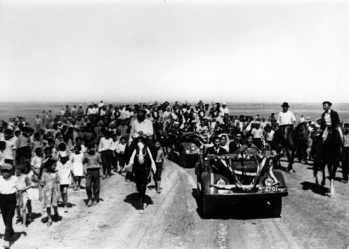
Still from 235 000 000, courtesy Riga Film Museum
In 1966, four filming crews set out to shoot footage simultaneously all across the Soviet Union for a year. The crews followed the script and a “field manual” by Uldis Brauns (b. 1932) and Herz Frank (1926–2013). Each crew also carried a copy of the book The Family of Man (1955), based on Edward Steichen’s landmark exhibition of photographs at the Museum of Modern Art in New York, which was evidently a major inspiration for the Latvian filmmakers. The crews’ main task was to collect material that would emphasize two opposite strands in the film’s composition and concept: the private and the collective.
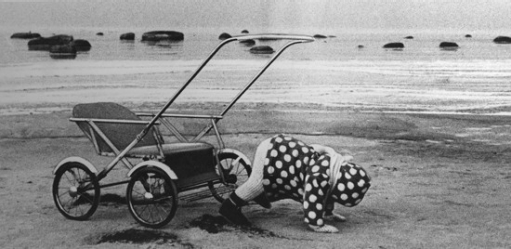
Still from 235 000 000, courtesy Riga Film Museum
Scenes in the former category capture the intimate, the personal, and the emotional. They create in the film a timeline of human life, full of love, hope, yearning, and mourning. There are weddings, a baby taking its first steps (in a breathtaking, profoundly allegorical scene), a parting at a train station, and other everyday rites of passage. These are contrasted with collective events of state importance, such as a congress of the Communist Party in Moscow, the amassing of armaments, military drills, and parades, all impressive by virtue of a grandeur that far exceeds human scale. Three main themes —Time, Love, and Road—further organize the film. The brilliance of the script lay in the flexibility it gave the crews while still guiding them in collecting scenes that highlight the main thematic contrasting lines. The skillful editing gives the film a unified aesthetic despite the diversity of events shot by four cinematographers. The film has no dialogue or voiceover, and the score, written by the tremendously popular Soviet Latvian composer Raimonds Pauls, ties the film together.
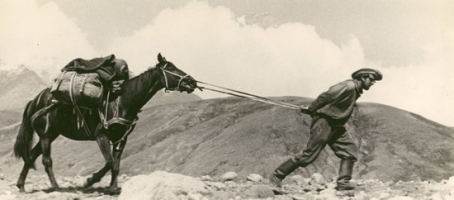
Still from 235 000 000, courtesy Riga Film Museum
The release of 235 000 000 marked the heyday of an important movement in Latvian film, the so-called Riga school of poetic documentary cinema. Several factors helped make such a production possible at the Riga Film Studio. The 1960s were a time when freer artistic expression became possible in the USSR and the Eastern Bloc. The hopefulness that marked the second half of the 1960s was a reverberation of the optimism associated with the Khrushchev Thaw, which persisted even after Khrushchev’s efforts at reforming Soviet society ended with his ouster in 1964. A new generation of filmmakers at the Riga Film Studio, fresh out of the Moscow All-Union State Institute of Cinematography (VGIK) sought in the early 1960s to portray the poetics of everyday life, to capture and romanticize the actions and emotions of the Soviet “everyman,” and to create a film language that would be densely metaphorical. This profound change in cinematic vision stood out all the more when compared with the stiff official mode of propagandistic filmmaking that dominated the newsreels and documentaries made in Latvia after the establishment of Soviet rule in 1945.
The young Latvian auteurs made the most of the newly available freedom of expression. Members of this group included Ivars Kraulītis, who made the short White Bells (1961) with a script by Herz Frank and cinematography by Uldis Brauns; Uldis Brauns, who made a trilogy of short films with The Beginning, The Construction, and The Worker (1961–63) from scripts by Armīns Lejiņš; and Aivars Freimanis, who made The Coast (1963) and A Year in Review (1965), with cinematography for both by Ivars Seleckis. Moscow authorities viewed these early films with favor, which made possible the support for the ambitious initiative of 235 000 000.
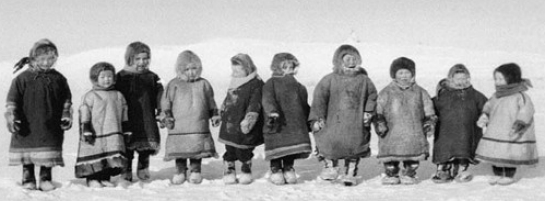
Still from 235 000 000, courtesy Riga Film Museum
Brauns and Frank thus set out to create a feature-length documentary rooted in the interests that their circle had been exploring in short films for the five previous years. The close-knit team was a strong driving force, uniting the production behind its members’ unorthodox and innovative approaches to both aesthetic and technical issues. Uldis Brauns, for instance, was the first at the Riga Film Studio to use the widescreen camera equipment that had become available several years earlier but lay untouched by older filmmakers.
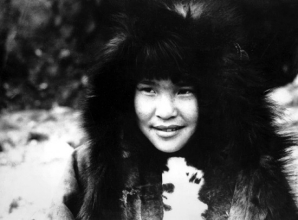
Still from 235 000 000, courtesy Riga Film Museum
The poetic film language of the team behind 235 000 000 combined images, music, and other sounds in ways that emphasized and honored the private lives of individuals against the grand backdrop of the Soviet Union’s ethnic diversity, geographic immensity, and ideological imperatives.[1] In doing so, however, they strove to achieve a unity of individual destinies on screen, so that they would appear as one. This echoed the 1920s montage films, particularly those of Dziga Vertov, who, however, remained a forbidden and largely forgotten figure in this period because his “formalism” did not accord with the principles of socialist realist cinema. Vertov’s politics and aesthetics were known to the 1960s filmmakers, such as Herz Frank, only through his writings.[2]
In the same way that the filmmakers of the Riga school seemed to echo Vertov’s work without seeing it, so their desire to elicit empathy for their subjects from the viewers resonated, unconsciously more than consciously, with contemporaneous developments abroad. Though their access to contemporary cinema of the West and its avant-garde trends was restricted, elements associated with cinéma vérité, Free Cinema, and Direct Cinema are present in 235 000 000. They capture the same ideals that informed filmmaking in the world that lay on the other side of the Iron Curtain and was full of exuberant experimentation of the various “new waves” in cinema, one of which was simultaneously happening in Riga.
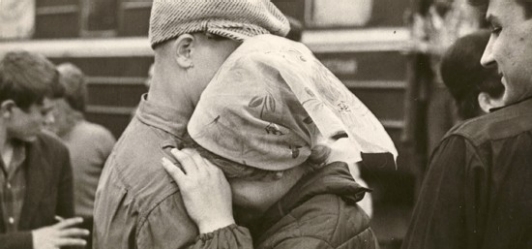
Still from 235 000 000, courtesy Riga Film Museum
The 1960s generation of filmmakers went on to have esteemed and innovative careers in the decades following the creation of 235 000 000. Herz Frank (the only member of this group who lacked formal training in filmmaking) became one of the foremost Latvian documentary filmmakers with such films as A Life (1973), which won the main prize at the Oberhausen Short Film Festival, 10 Minutes Older (1978), The Last Judgment (1987), and Flashback (2003). Ivars Seleckis similarly went on to make internationally acclaimed films, including the Crossroad Street documentary trilogy, the first installment of which won both the Joris Ivens Award at IDFA and the European Film Academy Award in 1989. Aivars Freimanis made the documentary feature The Catch (1969), as well as the film Apple in the River (1974), a fiction feature with a strong documentary flair. Uldis Brauns’ later films include Motorcycle Summer (1975) and Farewell, 20th Century! (2006).[3] Thanks to this generation of filmmakers, the strong tradition of innovative documentaries in Latvia also enabled the establishment of the European Documentary Film Symposium, a series of biennial meetings first of Soviet and later European documentarians that took place in Riga from 1977 to 2007. — Līva Pētersone
(235 000 000 exists in two versions: the original 108-minute cut and the shortened and widely circulated 70-minute cut. The shorter cut was featured in the program at the National Gallery.)
The series organizers would like to thank Līva Pētersone, curator at the Riga Film Museum, for her tireless assistance with our research for the series. Thanks also to Baiba Urbane and Sanita Grina of the Ģilde Film Studio, Riga, and Agnese Surkova of the Latvian Film Centre for their help in making a screening of this film possible in Washington.
1. For more on this, see Dāvis Sīmanis, “Untraditional Visual Forms in Latvian Cinematography: the Soviet Period,”; and Mihai Fulger, “Soviet Life Told through Realism and Poetry.” (back to top)
2. Viktorija Eksta, “Group Portrait of an Empire,”. People who worked in the film industry in the USSR did have access to films unavailable to regular citizens, including foreign films, which were shown at the Moscow International Film Festival and, in the case of Riga, in private screenings at the Union of Filmmakers. However, according to Līva Pētersone’s interview with Uldis Brauns, as well as the interviews quoted by Viktorija Eksta, neither Brauns nor Frank had actually seen the early Soviet films by Vertov, including The Sixth Part of the World, which is so strikingly similar in concept to 235 000 000. This points to a fascinating phenomenon in Latvian cinema of directors who strove for Antonioni- and Godard-like aesthetics and, perhaps, even politics despite never having seen the work of the Western filmmakers. (back to top)
3. For more on the history of Latvian documentary filmmaking throughout the 20th century, see Līva Pētersone, “On Latvian Documentary Cinema,” [in German]; and Inga Pērkone-Redoviča, “A Brief Look at Latvian Film History.” (back to top)
